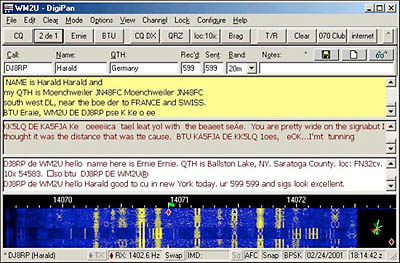
With your radio in either FSK (or RTTY) or LSB mode, tune across one of the RTTY sub-bands. If it looks like you are getting audio to your PC and the MMTTY indicators are active, then you are ready to copy RTTY. If you still have problems, click here to go to Receive Audio Troubleshooting on. Another thing to try is turning the BPF on or off using the BPF button just above the signal indicator.

It may be something as simple as not having the correct sound card channel (left, right or mono) selected within MMTTY (Options, Setup MMTTY) or the audio level not being high enough for MMTTY to recognize it. If your signal level or tuning indicators are not active at all, then something is wrong. Instead, be glad you are seeing them because it means that MMTTY is seeing some sort of audio and it’s enough to decode these noise characters. Don’t be bothered by these random characters. Seeing the “alphabet soup”, as it is sometimes called, is a good thing. To set the squelch threshold, click inside the signal indicator where you want to move the vertical threshold marker. If the noise is high enough for the signal indicator (green horizontal bar) to go above the vertical mark showing the squelch threshold, then characters, looking like gibberish, will appear in the receive window. What you are seeing in the tuning displays is noise. If your screen looks like this, you may be off to a good start. You should see some activity in MMTTY’s tuning indicators and depending on the squelch setting, you may even see some characters scrolling across the receive window and it may look like this. Turn on your radio, set it to either LSB or FSK (or RTTY mode) with an antenna connected. You can change some of these settings later when you become more comfortable with the program.

It’s also advisable to set the FFT Width to 500 Hz to start out. Ensure the Control Panel, Macro Buttons, FFT Display and the XY Scope options are selected.

It is assumed you have a cable connected from an audio output of your radio to the audio input of your PC’s Sound Card.


 0 kommentar(er)
0 kommentar(er)
